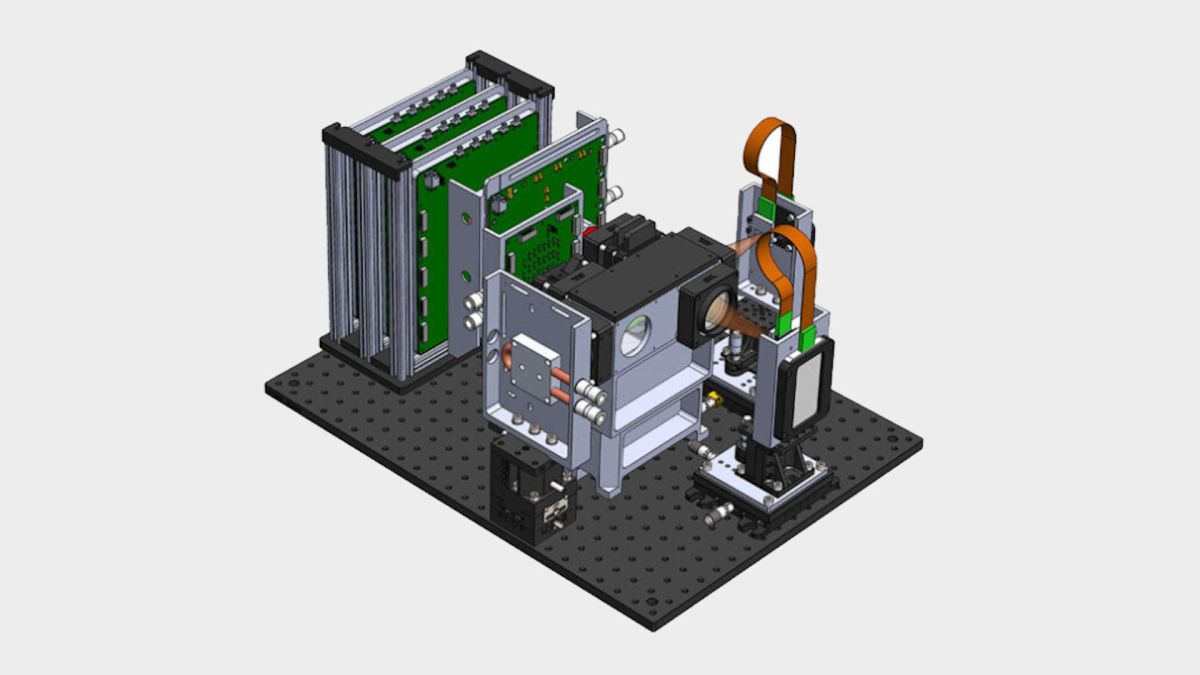It’s a very interesting sounding device in a terrible article written by someone who clearly doesn’t understand how it works.
Hopefully Arstechnica posts a more in depth write up on this.
Someone smarter than me tell me if this is amazing and game changing or boring and niche.
deleted by creator
If it turns out there’s something they do way better, they’d enter as an accelerator card like GPUs did.
deleted by creator
Have to think of it more like how quantum computers are right now. You aren’t going to be running minecraft or a web browser on it, but it’ll probably be very good at doing certain things. Those things can either be in their own silo never interacting directly with a traditional computer, or information will be sent between them in some way (such as sending a calculation job, then receiving the answers). That send/receive can afford to be slow if some translation is needed, if the performance gains on the actual task are worth it. It’s not like a GPU where you would expect your frames to be rendered in real time to play a game.
Eventually that may change but until then it’s no more than that, articles like these put a lot of hype on things that while very interesting can end up misleading people.
it would be the same way expansion cards work now; it would have digital control circuitry that can communicate with the analog circuitry.
We already have expansion cards that can do this. Audio cards are an example of an expansion card that convert between digital and analog signals.
Even things like graphics cards, ASICs, or FPGAs; it’s not a different type of signal, but it’s an architecture that isn’t compatible with the rest of the computer because it’s specialized for a certain purpose. So there’s control circuitry that allows it to do that and a driver on the computer that tells it how to.
deleted by creator
I can tell you with confidence that DACs can only convert digital sound data into analogue, and that’s due to the audio jack being older than digital audio.
Right. But the principle is the same; hardware that isn’t compatible with pre-existing systems has a control circuit, and a digital interface. The digital computer sends instructions to the controller, and the controller carries out the instructions.
An analogue device isn’t compatible with a digital device, much like how digital sound data (songs, audio tracks in videos, system sounds, etc…) and analogue audio don’t technically work.
Correct. That is why there is dedicated control circuitry designed for making analog and digital systems talk to each other – as there will be for optical analog computers and every other type of non-conventional computing system.
It’s true that conventional systems will not, by default, be able to communicate with analog computers like this one. To control them, you will send the question (instructions) to the control circuitry, which does the calculation on the hardware, and returns an answer. That’s true for DACs, it’s true for FPGAs, it’s true for CPUs, it’s true for ASICs.
Every temperature sensor, fan controller, camera, microphone, and monitor are also doing some sort of conversion between digital and analog signals. The light being emitted by the monitor to your eyes is a physical phenomenon that can be measured as an analog value (by taking a picture of your computer monitor on film, say). How does your monitor produce this analog signal? It has a control circuit that can take digital commands and convert them into light in specific patterns.
Using an analogue device to accelerate something requires at least some information to be lost on translation, even if the file size is stupidly large.
I don’t think you’ve understood what analog computers are used for (actually, I’m not sure that you’ve understood what analog computing even really is beyond that it involves analog electrical signals). Analog computers aren’t arbitrarily precise like digital computers are in the first place, because they are performing the computation with physical values – voltage, current, light color, light intensity – that are subject to interference from physical phenomenona – resistance, attenuation, redshift, inertia. In other words, you’re really worried about losing information that doesn’t exist in a reliable/repeatable way in the first place.
A lot of iterative numerical methods need an initial guess and can be iterated to an arbitary degree. Analog computers are usually used to provide the initial guess to save iteration flops. The resolution just is not that important when you’re only trying to get into the ballpark in the first place.
In other words, this computer is designed to solve optimization problems. Say you’re getting results based on the color and intensity of the light coming out of it, right, like you might get values of tides based on electrical voltage on an old desktop analog computer. It’s not that relevant to get the exact values for every millisecond at a sampling rate of a bajillion kilohertz; you’re looking for the average value that isn’t falsely precise.
So if you were designing an expansion card, you would design a controller that can modulate the color and intensity of the light going in, and modulate the filter weights in the matrix. Then you can send a digital instruction to “do the calculation with these values of light and these filter values”. The controller would read those values, set up the light sources and matrix, turn on the light, read the camera sensors at the back, and tell you what the cameras are seeing. Voila, you’re digitally controlling an analog computer.
deleted by creator
We need a translation layer, kinda like Linux has Proton for games.
It shall be called Photon.
Thank you. That helps clear it up!
deleted by creator
You’re all good, I promise - thanks for your info.
deleted by creator
deleted by creator
Yes
Thank you
Just doing my part 👍💪
deleted by creator
Inboobitably my dear Twatson
For some reason this 3D model reminds me of a very specific pixel art…
Oh no no no. I erased that GIF from my mind, I don’t want it back.








